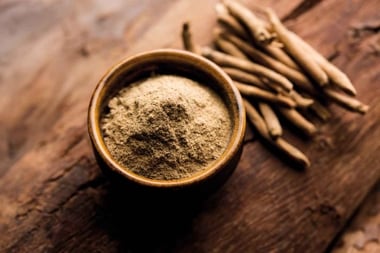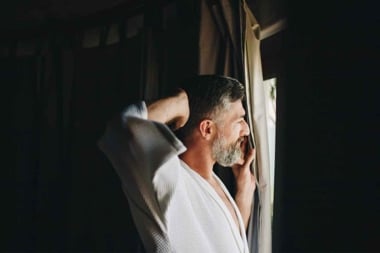
The human brain is responsible for intelligence, making sense of what we feel, initiating body movement, and controlling behaviour. Our brains use a variety of strategies, such as dissociation and memory, to help us survive traumatic events.
Despite this remarkable agility, the brain is also susceptible to repeating these behaviours after the event has ended. We return to normal life but continue to use trauma-related coping skills that can have negative effects on relationships, employment, and our feelings of safety and well-being.
The brain in balance
Indigenous peoples understand the brain as part of a balanced system that connects mind, body, spirit, and emotion.
“The mind is housed in the head space, so because of that, the mind is a very unique thing that is differentiated from heart and spirit,” says Dr. Nicole Redvers, a naturopathic doctor, public health researcher, and associate professor at Western University who is also a member of the Deninu K’ue First Nation.
“From a health and traditional medicine standpoint, that mind space has to be healthy, and it has to be in balance as an important part of our overall well-being,” Redvers adds. In Indigenous cultures, “balance” is understood in terms of relationships—an interconnectedness within the self, with others, and with the natural world and spirit world.
Balance is also key to the Western/European understanding of brain health and overall mental well-being. Too much input from the parasympathetic (rest-and-digest) nervous system and we’re numb, detached, and indifferent.
Too much action from the sympathetic (fight-or-flight) nervous system and we’re anxious, irritable, and in a high state of alert. The good news is that we can retrain our brain to make different decisions about how to respond to the pressures of everyday life.
Dance creates and preserves mental health and well-being
How culture and traditions impact the brain
Colonization has been experienced by populations all over the world, and the effects have been well documented to include higher rates of chronic disease such as depression.
In his keynote speech at the 2024 National Gathering for Indian Residential School Survivors in Vancouver, Dr. Michael Yellow Bird, a professor of social work at the University of Manitoba who is a member of the Mandan, Hidatsa, and Arikara Nation in North Dakota, said that traditional dances are more than just cultural expression.
Research has shown that dance—especially when it’s done in a group—provides protection against cognitive impairments such as Alzheimer’s disease and other forms of dementia. Dancing is great exercise, and exercise has been shown to reduce the risk of dementia.
But the positive effects of dance go far beyond the cardiovascular improvements created by physical activity. Cultural practices such as dance actually improve cognitive skills such as memory, attention, planning, focus, and organization through the combination of rhythm, balance, and movement.
The social aspect of group dancing also creates mindfulness and attunement that improves mental health and reduces the stress that can weaken the immune system over time, leading to inflammation and disease.
In Indigenous worldviews, balance between mind, body, spirit, and emotion is key to maintaining health and well-being. Social isolation negatively affects mental health. When we gather together, we create a relational space that promotes well-being.
Laws about living well
The World Health Organization defines health as “a state of complete physical, mental, and social well-being and not merely the absence of disease or infirmity.”
For Indigenous peoples, health and well-being is part of governance and law. Nehiyawak people in central and northern Alberta, for example, see health and well-being as part of miyopimâtisiwin, which is defined as leading an exemplary life through ceremony, understanding our responsibilities to community and to the land, being accountable, and living a good life through respectful relationships.
Redvers says Dene law also connects daily activities, values, and law. “We all know that sleep is good for our nervous system, for recovery, and for brain health,” Redvers says. “There’s a provision within our laws around sleeping at night and not during the day.
“One of our other laws is the idea of having a positive mindset and a positive way of thinking. Passing on our teachings is another one—sharing what we have and helping each other. We know, very clearly, for the prevention of depression and anxiety and many other kinds of conditions, that helping others can be an essential aspect of overall well-being.”
Indigenous lifestyles prior to contact required a high level of physical fitness. This fitness was maintained through a nutritious diet and daily and seasonal practices such as fasting, sweats, and the use of medicinal plants. “We have treatments for stroke,” Redvers adds.
Medicine for the brain
Infectious diseases, relocation to reserves, and residential schools have created higher rates of chronic disease in Indigenous peoples. As a result, Indigenous populations are experiencing a rise in dementia across the globe. But Indigenous science and medicine just might have a solution for everyone.
“Conditions like Alzheimer’s have been linked to inflammation,” Redvers says. “I just finished up a study in the United States looking at a specific food berry, demonstrating that it actually inhibits the epigenetic expression of genes related to inflammation. You can’t change your genes, but you can affect the expression of your genes.”
Cultural activities also play an important part in maintaining brain health and overall mental well-being. “Studies have shown beneficial impacts of using the brain for reading or learning new languages,” Redvers says. “But what about beading? What about sewing? All these kinds of things keep the mind busy and keep those neural pathways clear.”
Brain health is planetary health
Climate change, biodiversity loss, and pollution are having greater negative effects on populations that create low levels of greenhouse gases. Redvers says planetary health should become a determinant of human health, because Indigenous health will ultimately affect the health of Earth and everyone on it.
“When Indigenous peoples have their own health and wellness, their own cultures and sovereignty, their language, their land, then they’re likely to continue being able to steward the 80 percent of remaining biodiversity that is held in Indigenous lands right now. It is so important for people and organizations to support Indigenous land rights and Indigenous well-being,” Redvers says.
12 traditional practices that help us heal
Dr. Michael Yellow Bird says traditional cultural practices can heal unresolved emotions, reset genetic expression, and facilitate healing. Find time in your daily and seasonal calendar to:
- run
- dance
- sing
- sleep
- laugh
- use humour
- gather
- share with others
- fast
- meditate
- go to the sauna or sweat lodge
- be outside
This article was originally published in the July 2024 issue of alive magazine.





